Tiếng anh giao tiếp online
Giải đề IELTS Reading: Mapping the Mind [Full answers]
Mục lục [Ẩn]
Khi ôn tập IELTS Reading, việc luyện kĩ năng giải đề qua các đề thi thật là một cách hiệu quả giúp bạn tăng band điểm nhanh. Bài viết này sẽ giúp bạn giải trọn vẹn đề thi thật IELTS Reading “Mapping the Mind” với đầy đủ đề bài, câu hỏi, đáp án chi tiết kèm giải thích rõ ràng. Đây sẽ là tài liệu hữu ích để bạn ôn luyện và nâng cao kỹ năng Reading, sẵn sàng chinh phục band điểm mục tiêu trong kỳ thi IELTS.
1. Đề thi thật IELTS Reading “Mapping the Mind”
READING PASSAGE 3
You should spend about 20 minutes on Questions 27-40, which are based on Reading Passage 3 on pages 11 and 12.
Mapping the Mind
Dr. Simon Hanson reviews Rita Carter's book Mapping the Mind.
The often-used phrase "I believe it when I see it" betrays a very intimate fact of human nature. We are visual creatures and rely on sight to serve as a judge of what is real and what is not. When discussing the intricacies of the human mind, for most of society's existence, things have not been visible; we have, for the most part, relied on intangible concepts, metaphors, and words to explore our inner psyche. I have no idea what my ego looks like. I must have one because it can be hurt or appeased by how others treat me. But how do I know it really exists?
Recent progress in brain research and neuroimaging is changing all of this. With our modern technology of functional imaging, we can now look at the brain as it is working and attribute activation in certain areas of the brain to behaviors, thoughts, and feelings. In essence, our new tools are prompting new thoughts on who we are and how we are organized. Rita Carter's book, Mapping the Mind, explores these issues and exploits science's ability to look into our heads as a tool to examine who we are.
In its most basic form, Carter's book serves as a very accessible introduction to the subject of neuroanatomy, a subject most of us would not appreciate fully without investing in a semester of medical school. Mapping the Mind uses beautifully rendered three-dimensional computer images of the brain to explain anatomical structures and pathways. The presentation style acknowledges our natural bias towards perceiving and learning information visually. Presenting the concept of a brain area devoted to maintaining attention by calling it the "anterior cingulate cortex" would probably put most readers to sleep while their brains struggled to use that area to focus on what the name meant. Showing the reader a three-dimensionally-oriented area that easily translates to a place we can point to on our skulls grounds the anatomical vocabulary in something we can all understand - our own heads.
In spite of the title, however, the book is not an exact map or a reference guide. Its chapters cover concepts such as perception, emotions, memory, and higher consciousness, and are best read rather than referenced. The book, beautifully accented with brain-oriented artwork of both pure aesthetic and illustrative value, walks a pleasing line between college textbook and coffee table art book, describing the subtle nuances of vision, language, thought, and feeling with science and art.
While the art requires no explanations, Carter uses her background as a journalist to keep the reader engaged in the science. Factual support in the form of documented cases is liberally employed to show the abstract concepts in recognizable behaviors and consequences we can all relate to. For example, in describing brain circuitry involved in controlling anger, Carter uses familiar situations, like suppressing anger when we feel we have been insulted, to illustrate the neuroscience involved. She follows with a discussion of children's emotional maturity, pointing out that in children, the areas involved in inhibition of anger are not as well developed as in adults, providing an explanation for the tantrums of a six-year-old. Carter presents the science in an engaging yet factual manner, allowing people to draw their own conclusions and connect the dots between scientific discovery and what it means in our daily lives.
By presenting neuroscience in this manner, Mapping the Mind seems to aim itself at an audience that is often forgotten: the general reader who wants to know more about a specific area of scientific study. From a scientific perspective, danger often lurks when writing for a general audience as scientific credibility can be sacrificed in order to keep readers engaged. Carter circumvents this problem by including the participation of research scientists in the writing. The book is littered with short directed essays written by specialists in specific areas of brain research.
One of my favorite features of the book is the optical illusions. As a teacher, I am always searching for ways to make information relevant to the reader. Mapping the Mind does this by peppering appropriate chapters with optical illusions that illustrate how the brain processes information. These delicious enigmas do not stand alone as supplementary information or unrelated facts but are accompanied by textual explanations and insights into what causes the perceptual incongruities. I found many of these explanations so good at conveying basic brain principles that I borrowed some of them for use in lectures.
From our unique place in history, we can, at present, use our overly developed neo-cortex in combination with the tools of science to examine our own minds at work. Our journey is to try and figure out who we are. Rather than providing us with an academic textbook, Mapping the Mind serves as a sort of kiosk map saying "you are here" with a big red dot. Mapping the Mind shows us where we are by giving us a snapshot of how we work. There are many books out there that explain the mind. The unique perspective of this book is that it uses the brain itself to guide the journey.
Questions 27–32
Do the following statements agree with the claims of the writer in Reading Passage 3?
In boxes 27–32 on your answer sheet, write:
YES if the statement agrees with the claims of the writer
NO if the statement contradicts the claims of the writer
NOT GIVEN if it is impossible to say what the writer thinks about this
- Our sense of what is real is independent of what we can see.
- The ego must exist because its reaction can be felt.
- The illustrations in Mapping the Mind are in vibrant colours.
- People prefer to learn facts that are presented visually.
- Mapping the Mind is primarily a decorative book.
- Mapping the Mind leaves the readers to interpret the facts.
Questions 33–37
Choose the correct letter, A, B, C, or D.
Write the correct letter in boxes 33–37 on your answer sheet.
34. According to the writer, Carter's background in journalism means that:
- she has easy access to relevant sources.
- she cannot explain complex medical ideas.
- her writing style maintains the reader's interest.
- her presentation of information is more suited to newspapers.
34. When discussing how the brain works in controlling anger, Carter:
- gives guidance to parents of young children.
- uses examples readers can relate to.
- admires the control shown by adults.
- criticizes the behaviour of children.
35. The writer feels that the way neuroscience is presented in Mapping the Mind:
- will not give readers any new information.
- could make readers doubt scientific claims.
- will encourage more people to study neuroscience.
- will appeal to readers with no knowledge of the topic.
36. The writer especially likes the optical illusions in Mapping the Mind because they:
- help people relate to the topic.
- are a long-standing scientific mystery.
- can teach us about the function of the eye.
- show something people have never seen before.
37. The writer says that Mapping the Mind operates as a "kiosk map" because:
- it reveals our current position in terms of our knowledge of the brain.
- the reader can become lost in other textbooks about the brain.
- it describes specific areas of the brain such as the neo-cortex.
- its illustrations are particularly clear and accurate.
Questions 38–40
Complete each sentence with the correct ending, A–G, below.
Write the correct letter in boxes 38–40 on your answer sheet.
- A book that uses terms such as "anterior cingulate cortex"...
- The use of three-dimensional illustrations in the book...
- The inclusion of essays by research scientists in Mapping the Mind...
- makes a background in science essential for comprehension.
- adds academic integrity to a popular approach.
- is not helpful for checking particular data about the brain.
- bores and confuses people.
- generates more interest in the field of study and promotes research.
- solves the difficulty of people's negative reactions to technical language.
- has no clear purpose.
>>> XEM THÊM:
- Chiến thuật làm dạng bài Short Answer Question trong IELTS Reading
- Top Website luyện IELTS Reading miễn phí tốt nhất, đạt band mục tiêu
2. Đáp án đề IELTS Reading “Mapping the Mind”
Dưới đây là bảng đáp án để đối chiếu:
|
27. No |
28. Yes |
|
29. Not Given |
30. Yes |
|
31. No |
32. Yes |
|
33. C |
34. B |
|
35. D |
36. A |
|
37. B |
38. D |
|
39. F |
40. B |

Đáp án chi tiết 27–32 (YES / NO / NOT GIVEN)
- Our sense of what is real is independent of what we can see.
Trong đoạn đầu: “We are visual creatures and rely on sight to serve as a judge of what is real and what is not.” → Con người dựa vào thị giác để biết cái gì là thật, cái gì không. Như vậy câu hỏi nói “không phụ thuộc” là ngược với ý trong bài.
Đáp án: NO
- The ego must exist because its reaction can be felt.
Tác giả viết: “I must have one [ego] because it can be hurt or appeased by how others treat me.”
→ Ông tin rằng cái “ego” tồn tại, vì cảm nhận được phản ứng của nó (bị tổn thương, được xoa dịu).
Đáp án: YES
- The illustrations in Mapping the Mind are in vibrant colours.
Bài có nói sách dùng hình ảnh 3D đẹp, nhưng không hề nhắc đến màu sắc rực rỡ.
Đáp án: NOT GIVEN
- People prefer to learn facts that are presented visually.
Đoạn 3: “The presentation style acknowledges our natural bias towards perceiving and learning information visually.” → Con người có xu hướng thiên về tiếp nhận thông tin bằng hình ảnh.
Đáp án: YES
- Mapping the Mind is primarily a decorative book.
Đoạn 4: “The book walks a pleasing line between college textbook and coffee table art book.” → Nó vừa có tính học thuật vừa có tính nghệ thuật, không phải chỉ để trang trí.
Đáp án: NO
- Mapping the Mind leaves the readers to interpret the facts.
Đoạn 5: “Carter presents the science in an engaging yet factual manner, allowing people to draw their own conclusions.” → Bà đưa sự thật và để người đọc tự rút ra kết luận.
Đáp án: YES
Đáp án chi tiết 33–37 (Multiple choice)
- According to the writer, Carter's background in journalism means that:
Đoạn 5: “Carter uses her background as a journalist to keep the reader engaged in the science.” → Nhờ làm báo, văn phong của Carter giữ được sự hứng thú của người đọc.
Đáp án: C
- When discussing how the brain works in controlling anger, Carter:
Bài nói Carter dùng ví dụ quen thuộc (bị xúc phạm, trẻ con giận dỗi) để giải thích.
→ Không phải lời khuyên cho cha mẹ, không phải chê trẻ, mà là dùng ví dụ gần gũi với người đọc.
Đáp án: B
- The writer feels that the way neuroscience is presented in Mapping the Mind:
Đoạn 6: “Mapping the Mind seems to aim itself at an audience that is often forgotten: the general reader…” → Cách trình bày giúp người không có kiến thức nền vẫn hiểu được.
Đáp án: D
- The writer especially likes the optical illusions in Mapping the Mind because they:
Đoạn 7: “These delicious enigmas… accompanied by explanations… so good at conveying basic brain principles that I borrowed some of them for lectures.” → Chúng giúp người học dễ liên hệ, dễ hiểu.
Đáp án: A
- The writer says that Mapping the Mind operates as a "kiosk map" because:
Đoạn cuối: “Mapping the Mind serves as a sort of kiosk map saying ‘you are here’ with a big red dot.” → Giống bản đồ chỉ chỗ bạn đang đứng, nghĩa là sách cho ta biết hiện tại hiểu được đến đâu về bộ não.
Đáp án: A
Đáp án chi tiết 38 - 40 (Sentence completion)
- A book that uses terms such as “anterior cingulate cortex”…
Đoạn 3: tác giả nói nếu chỉ đưa tên khoa học thì “would probably put most readers to sleep”. → Làm người ta buồn ngủ, khó hiểu.
Đáp án: D (bores and confuses people)
- The use of 3D illustrations in the book…
Đoạn 3: hình 3D giúp biến thuật ngữ khoa học thành thứ dễ hình dung trên chính cái đầu mình. → Giải quyết khó khăn do ngôn ngữ chuyên môn gây ra.
Đáp án: F
- The inclusion of essays by research scientists…
Đoạn 6: “The book is littered with short directed essays written by specialists…” → Điều này giữ tính khoa học, tăng độ tin cậy.
Đáp án: B (adds academic integrity to a popular approach)
>>> XEM THÊM: Giải đề IELTS Reading: Marketing and the information age [Full answers]
3. Từ vựng quan trọng trong bài IELTS Reading “Mapping the Mind”
Khi bước vào hành trình giải đề IELTS Reading, việc xây dựng vốn từ vựng theo một lộ trình khoa học là yếu tố then chốt để cải thiện band điểm. Cách học hiệu quả không chỉ dừng lại ở việc làm đề thường xuyên mà còn cần gắn liền với việc ghi nhớ và áp dụng từ mới trong ngữ cảnh học thuật. Bài viết này mang đến danh sách từ vựng IELTS Reading quan trọng trong bài Mapping the Mind, giúp bạn tăng tốc độ đọc hiểu, nâng cao khả năng phân tích thông tin và từng bước đạt kết quả tốt hơn ở kỳ thi chính thức.
|
Từ / Cụm từ |
Nghĩa tiếng Việt |
Ví dụ trong bài |
|
betray (v) |
để lộ, bộc lộ |
The often-used phrase "I believe it when I see it" betrays a very intimate fact of human nature. |
|
intimate (adj) |
sâu xa, mật thiết |
…betrays a very intimate fact of human nature. |
|
visual creatures |
sinh vật thiên về thị giác |
We are visual creatures and rely on sight to serve as a judge of what is real and what is not. |
|
intangible (adj) |
vô hình, không sờ thấy được |
…we have, for the most part, relied on intangible concepts, metaphors, and words to explore our inner psyche. |
|
psyche (n) |
tâm hồn, nội tâm |
…to explore our inner psyche. |
|
ego (n) |
cái tôi |
I have no idea what my ego looks like. I must have one because it can be hurt or appeased by how others treat me. |
|
neuroimaging (n) |
chẩn đoán hình ảnh não |
Recent progress in brain research and neuroimaging is changing all of this. |
|
attribute (v) |
gán cho, quy cho |
…we can now look at the brain as it is working and attribute activation in certain areas of the brain to behaviors, thoughts, and feelings. |
|
accessible (adj) |
dễ tiếp cận, dễ hiểu |
In its most basic form, Carter's book serves as a very accessible introduction to the subject of neuroanatomy. |
|
neuroanatomy (n) |
giải phẫu thần kinh |
…an introduction to the subject of neuroanatomy. |
|
three-dimensional (adj) |
ba chiều, 3D |
Mapping the Mind uses beautifully rendered three-dimensional computer images of the brain… |
|
anatomical structures |
cấu trúc giải phẫu |
…to explain anatomical structures and pathways. |
|
anterior cingulate cortex |
vỏ não vành trước |
Presenting the concept of a brain area devoted to maintaining attention by calling it the "anterior cingulate cortex" would probably put most readers to sleep… |
|
skull (n) |
hộp sọ |
…translates to a place we can point to on our skulls… |
|
perception (n) |
sự nhận thức |
Its chapters cover concepts such as perception, emotions, memory, and higher consciousness. |
|
aesthetic (adj) |
mang tính thẩm mỹ |
…beautifully accented with brain-oriented artwork of both pure aesthetic and illustrative value… |
|
illustrative (adj) |
có tính minh họa |
…artwork of both pure aesthetic and illustrative value. |
|
inhibition (n) |
sự kiềm chế, ức chế |
…the areas involved in inhibition of anger are not as well developed as in adults… |
|
tantrum (n) |
cơn giận dữ (trẻ con) |
…providing an explanation for the tantrums of a six-year-old. |
|
credibility (n) |
độ tin cậy |
…danger often lurks when writing for a general audience as scientific credibility can be sacrificed… |
|
specialist (n) |
chuyên gia |
…short directed essays written by specialists in specific areas of brain research. |
|
optical illusion (n) |
ảo giác thị giác |
One of my favorite features of the book is the optical illusions. |
|
enigma (n) |
điều bí ẩn |
These delicious enigmas do not stand alone as supplementary information… |
|
incongruity (n) |
sự không ăn khớp, phi lý |
…insights into what causes the perceptual incongruities. |
|
neo-cortex (n) |
tân vỏ não |
…use our overly developed neo-cortex in combination with the tools of science to examine our own minds… |
|
kiosk map |
bản đồ chỉ vị trí “bạn đang ở đây” |
Mapping the Mind serves as a sort of kiosk map saying "you are here" with a big red dot. |
>>> XEM THÊM:
- Phương pháp học từ vựng IELTS hiệu quả và dễ nhớ nhất
- Top 10 sách học từ vựng IELTS hay và hiệu quả nhất cho người mới
4. Nâng cao band điểm IELTS cùng khóa học IELTS online của Langmaster
Khi ôn luyện đề IELTS Reading “Mapping the Mind”, nhiều thí sinh gặp trở ngại trong việc nhận diện dạng câu hỏi và vận dụng vốn từ học thuật sao cho phù hợp. Để cải thiện kỹ năng làm bài và tăng band điểm Reading, người học cần có chiến lược luyện tập khoa học, kết hợp cùng lộ trình học tập rõ ràng.
Hiểu được nhu cầu này, Langmaster đã thiết kế các khóa học IELTS online cá nhân hóa, giúp học viên xây dựng nền tảng vững chắc. Với sự đồng hành sát sao từ đội ngũ giảng viên giàu kinh nghiệm, học viên sẽ được sửa lỗi nhanh chóng trong vòng 24 giờ và định hướng phương pháp ôn luyện hiệu quả, từ đó nâng cao tốc độ đọc hiểu và chinh phục mục tiêu IELTS một cách bền vững.
Tại Langmaster học viên được:
- Coaching 1 - 1 với chuyên gia: Học viên được kèm riêng để khắc phục điểm yếu, phân bổ thời gian thi chi tiết, tập trung rèn kỹ năng chưa vững và rút ngắn lộ trình nâng band.
- Sĩ số lớp nhỏ, 7 - 10 học viên: Giáo viên theo sát từng bạn, nhiều cơ hội trao đổi và nhận phản hồi chi tiết.
- Lộ trình học cá nhân hóa: Thiết kế dựa trên trình độ đầu vào và mục tiêu điểm số, kèm báo cáo tiến bộ hàng tháng.
- Giáo viên 7.5+ IELTS: Chấm chữa bài trong 24 giờ, giúp bạn cải thiện nhanh chóng và rõ rệt.
- Thi thử định kỳ: Mô phỏng áp lực thi thật, phân tích điểm mạnh - yếu để điều chỉnh chiến lược học.
- Cam kết đầu ra, học lại miễn phí: Đảm bảo kết quả, giảm thiểu rủi ro “học xong vẫn chưa đạt mục tiêu”.
- Học online tiện lợi, chất lượng như offline: Có bản ghi để xem lại, linh hoạt, tiết kiệm thời gian, chi phí.
- Hệ sinh thái học tập toàn diện: Tài liệu chuẩn, bài tập online, cộng đồng học viên và cố vấn luôn đồng hành.
Đăng ký học thử IELTS Online miễn phí ngay hôm nay để trải nghiệm lớp học thực tế, kiểm tra trình độ và nhận lộ trình học tập hiệu quả, giúp bạn thành thạo kỹ năng IELTS Reading và chinh phục mục tiêu IELTS!
Khi ôn luyện đề IELTS Reading “Mapping the Mind”, học viên không chỉ nắm vững đáp án đúng mà còn phát triển khả năng phân tích theo từng dạng câu hỏi một cách logic. Việc kết hợp từ vựng học thuật trong ngữ cảnh thực tế giúp ghi nhớ hiệu quả, đồng thời mở rộng vốn từ cần thiết cho kỹ năng đọc, chinh phục band điểm IELTS hiệu quả.
Nội Dung Hot
KHÓA TIẾNG ANH GIAO TIẾP 1 KÈM 1
- Học và trao đổi trực tiếp 1 thầy 1 trò.
- Giao tiếp liên tục, sửa lỗi kịp thời, bù đắp lỗ hổng ngay lập tức.
- Lộ trình học được thiết kế riêng cho từng học viên.
- Dựa trên mục tiêu, đặc thù từng ngành việc của học viên.
- Học mọi lúc mọi nơi, thời gian linh hoạt.

KHÓA TIẾNG ANH GIAO TIẾP ONLINE
- Học theo nhóm (8-10 người), môi trường học tương tác và giao tiếp liên tục.
- Giáo viên đạt tối thiểu 7.0 IELTS/900 TOEIC.
- Học online chất lượng như offline.
- Chi phí tương đối, chất lượng tuyệt đối.
- Kiểm tra đầu vào, đầu ra và tư vấn lộ trình miễn phí

KHÓA TIẾNG ANH TRẺ EM
- Giáo trình Cambridge kết hợp với Sách giáo khoa của Bộ GD&ĐT hiện hành
- 100% giáo viên đạt chứng chỉ quốc tế IELTS 7.0+/TOEIC 900+
- X3 hiệu quả với các Phương pháp giảng dạy hiện đại
- Lộ trình học cá nhân hóa, con được quan tâm sát sao và phát triển toàn diện 4 kỹ năng
Bài viết khác

Nâng cao trình độ tiếng Anh của bạn với bộ tài liệu miễn phí từ Langmaster! Đăng ký ngay để bắt đầu hành trình chinh phục tiếng Anh!

Kỳ nghỉ hè 2024 sắp kết thúc, thời gian trở lại trường học của các mầm non đất nước ngày càng gần. Vậy lịch đi học lại sau hè 2024 của 63 tỉnh thành là khi nào?

Bạn muốn hiểu rõ hơn về cấu trúc bài thi Cambridge. Hãy đăng ký "Thi Thử Tiếng Anh Cambridge Miễn Phí Tại Langmaster - Nhận Góp Ý Từ Giảng Viên” ngay hôm nay.

Bạn đang có nhu cầu tìm khóa học tiếng Anh giao tiếp cho người lớn tuổi để đi nước ngoài? Tham khảo ngay bài viết dưới đây cùng tiếng Anh giao tiếp Langmaster nhé!

Review top 5+ Khóa học tiếng Anh thương mại cho doanh nghiệp: tham khảo các khóa học tại Langmaster, EIV, Skype English, AROMA, Axcela, Wall Street English,...







 16+ năm kinh nghiệm,
800.000+ học viên
16+ năm kinh nghiệm,
800.000+ học viên


